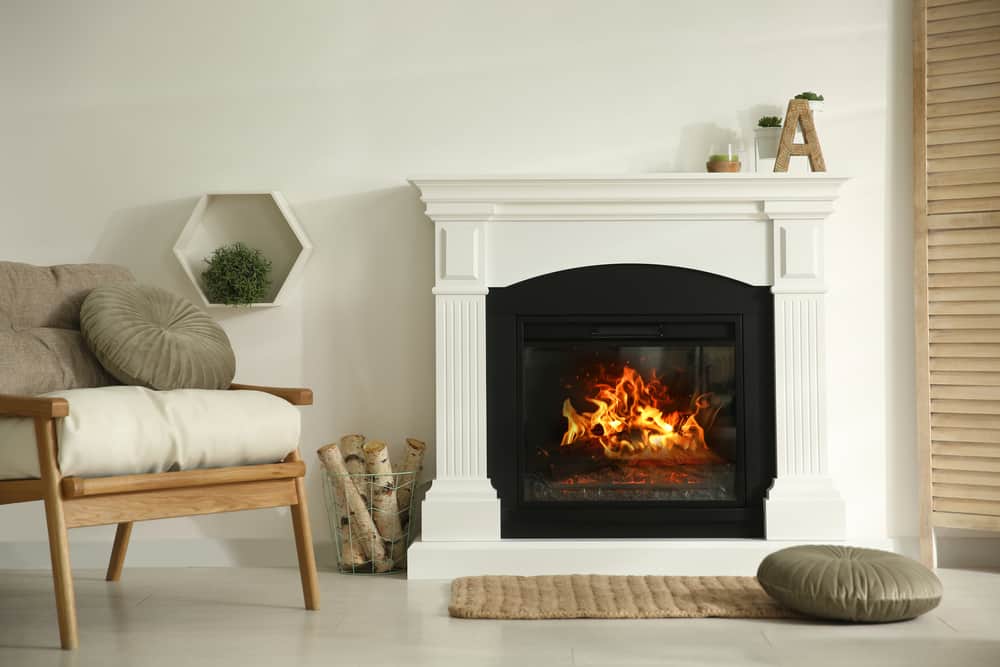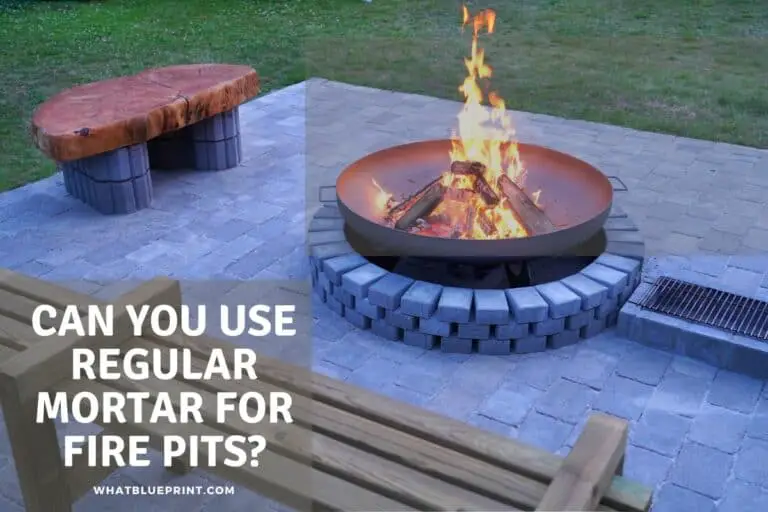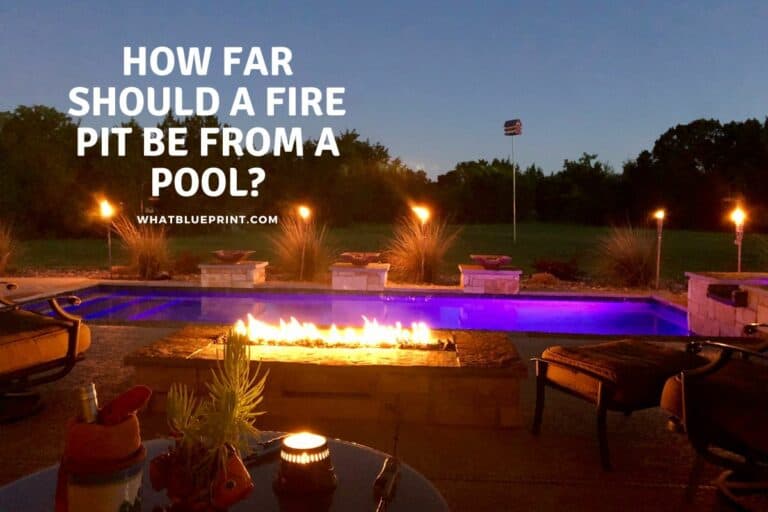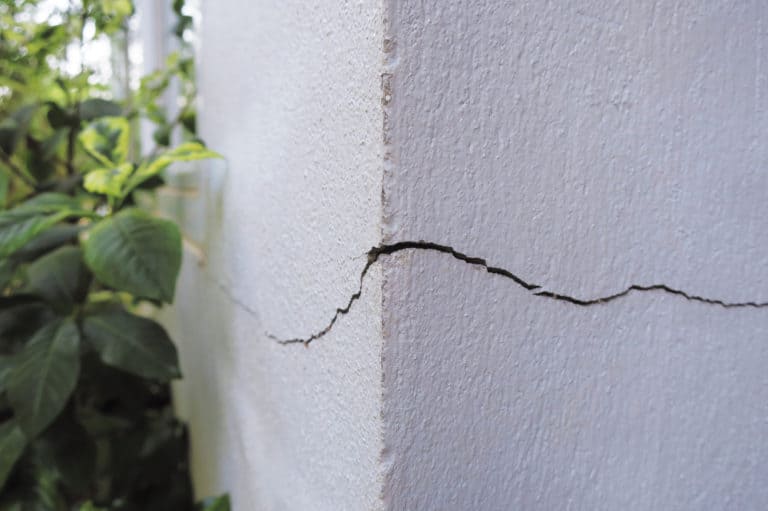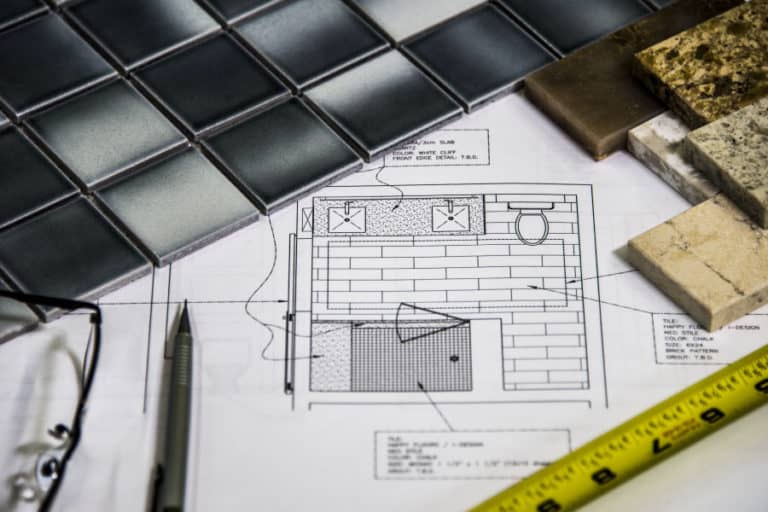Can a Fireplace Be Moved? What You Must Know
Fireplaces are a great, sophisticated addition to any home, and they look very interesting. They are one of the features that many people in the city would pay a premium to acquire. Your fireplace is likely your home’s pride and joy. If you have been secretly wishing to move your fireplace, but thought that it wasn’t even an option, maybe, just maybe, it’s time to reconsider.
Hard as it is to believe, it’s pretty easy to move a gas fireplace, but a wood-burning fireplace requires extra effort during a relocation. Moving a fireplace is an exciting yet daunting project.
If you’re looking for ways to revamp your living space’s look or provide a heating boost, but don’t know how to go about it, here is what you must know. Moving a fireplace requires diligent planning, and it’s best to have some experience under your belt before trying to tackle this job.
4 Things to Consider Before Moving Your Fireplace
There are a few things you need to consider before moving your fireplace. Let’s take a look at them.
1. Type of fireplace
When sitting around fireplaces, you typically conjure an image of a beautiful open-hearth with large flames and crackling logs. What you see is the classic wood-burning system. You can also experience the heat without your wood by turning a knob or flipping a switch that ignites your flame. Now, that is a gas fireplace.
Most people don’t know what kind of a fireplace they have, and many don’t realize that there are a large variety of other types that warm, stylize, and add financial value to your home. It is the most critical piece of information you will need when you decide to move your fireplace. Let’s take a look at a few fireplaces.
Wood Burning Fireplace
The wood-burning fireplace is most famous for its aesthetic appeal as it is hard to replicate the beautiful ambiance that a wood fire creates. The atmosphere, the warmth, the sound, and the smell are all things that people love about natural wood fires.
There are different types of wood-burning fireplaces; site-built masonry and prefabricated. A self-built masonry fireplace is built by the homeowner and typically takes a lot of time to complete. This type requires you to develop your hearth, chimney flue, and firebox in addition to insulating and framing. Prefabricated fireplaces come ready to install from the factory with all parts supplied, including exterior wall protection so that it’s easy for a contractor or handyman to install them.
The prefabricated systems are usually steel, aluminum, cast iron, or copper, eliminating rusting over time but can be more expensive than site-built masonry systems.
Can You Move a Wood-burning Fireplace?
You can move a wood-burning fireplace, but it requires a professional mover or mason to do the job efficiently. in addition, it’s very costly to move a wood-burning fireplace. Taking apart this type of system is laborious and time-consuming, but it’s not impossible.
Gas Fireplace
Gas fireplaces act like wood-burning fireplaces, but the gas produces the fire. More precisely, natural gas or propane has flames. The best thing is that their roaring fire doesn’t require tending. They burn more realistically, and you can experience the heat at different levels by adjusting the knob.
There are different types of gas places; gas logs, inserts, and built-in vent free. Gas logs come in ceramics or rubber, and they look like natural logs, but it’s a gas burner inside. They are easier to maintain because they don’t produce dust or soot. Inserts are installed into an already existing fireplace and can fit in any opening. They also require low maintenance. Built-in vent-frees don’t need any vents or chimnies—manufacturers designed them for heating efficiency and easy installation.
Can You Move a Gas Fireplace
It’s pretty easy to move gas fireplaces. You only need some more vent pipes and some carpentry skills to relocate them.
Electric Fireplace
Electric fireplaces are the most cost-effective and least complicated types. They are plug-in units and don’t require any installation at all. Most of them feature a heating element and a built-in screen that displays a roaring fire. To experience subtle warmth and a beautiful LED flame, all you need is a remote-controlled button.
Electric fires come in different types; wall-mounted, tv stand fireplace, and mantel electric. The electric wall-mounted fireplace doesn’t need chimneys, vents, or flues. They tend to be the best option for homes with no gas line.
The fireplace requires a 110-volt outlet to function. The tv-stand fireplace looks like a conventional fireplace, but it’s pretty small in size. It can be easily moved from one place to another because it has no flues or vents. Mantel electric fireplaces are perfect for placing on top of existing wood-burning fireplaces, and they look very realistic when lit up.
Can You Move an Electric Fireplace?
It is easy to move an electric fireplace. If you are revamping an area of your home to move the chimney system, then it’s not necessary; with an electric fireplace, you can experience the relaxed and comforting ambiance in any room in your home.
Bioethanol Fireplace
Bioethanol creates flames by mixing ethanol with air, and it doesn’t produce any ash, smoke, or soot. It’s a clean-burning fuel that emits low levels of carbon dioxide. Bioethanol fireplaces come into two types; closed system bioethanol fireplaces that connect to the gas supply line via an external pump or open systems filled with a bioethanol container. A professional can install a bioethanol fireplace without breaking a sweat.
Can You Move a Bioethanol Fireplace?
You can move most bioethanol fireplaces because they do not need installation, but you will need a professional to cut and cap gas lines for a closed bioethanol fireplace.
Decorative Flames
Decorative flames are precisely for convenience and beauty. They are accessible in different styles and finishes. The fire may look natural, but fiber-optic technology makes it look real. It produces an optical effect on walls, ceilings, or furniture. They have some special effects like the sound of crackling logs and flickering candles.
Can You Move Decorative Flames?
If your property is in a high-fire area, manufacturers don’t recommend moving decorative flames. You must contact the fire department first before moving anything, especially if it has a heating element.
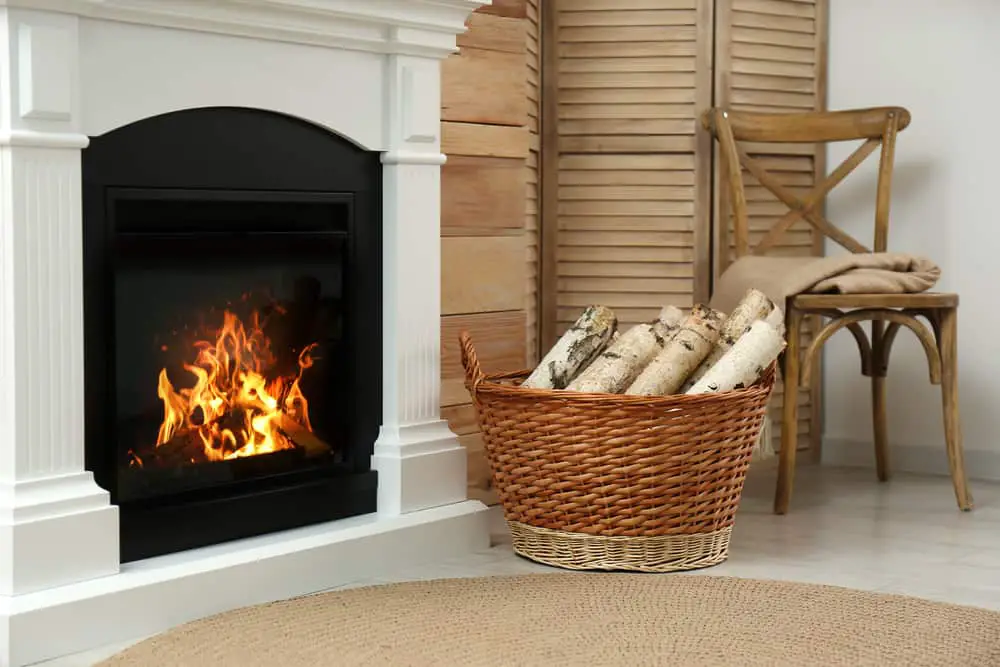
2. Cost
You might want to research how much it costs to move fireplaces. It can be expensive, and it depends on the type of fireplace and its size. Typically, the cost of moving a fireplace and chimney is $3,000- $6,000. The process includes demolishing the breast and the stack, installing structural support, and repairing the floor, walls, and roof.
Moving a partial fireplace and chimney costs $500 to $2,500 to remove everything below or above the roof-line. If you decide to move a wood-burning vent, there is a possibility of demolishing the entire chimney. A complete chimney demolition costs $2,500 to $7,500 to detach everything above and below the roof-line.
A complete detachment includes removing the chimney stack, liner, breast, firebox, and hearth. The cost also includes adding structural support and repairing the roof, walls, and floor. Prices depend on the size, location, and number of floors in your home. You also need to consider the materials used in construction and the amount of reinforcement a structural engineer requires.
A site-built stone or brick fireplace costs more to move than a pre-fab fireplace insert. Moving a gas fireplace involves disconnecting the gas or propane line and hard electrical wiring. The costs depend on whether the unit is an insert, installed with a pre-fab mantle, or wall-mounted. Extra charges apply for patching your wall.
An outdoor fireplace costs from $500 to $3,000 depending on its construction materials, size, framing, fuel source, accessibility, and if it’s free-standing. Masonry and brick demolition costs $25 to $50 per verticle linear foot and hiring contractors to disconnect the gas line, and wiring runs $200 to $500. Extra costs might apply for outdoor fireplaces attached to the house that require wall repair and structural support. Moving a fireplace requires a budget, and you should be ready to dig into your pockets.
3. Location
How effective your fireplace will be will depend substantially on its placement. If you’re looking to move the fireplace in your home, determining the best position for a fireplace should be your first consideration. Here are a few things to consider;
First, if you’re moving a fireplace from one room to another, think about the layout of your new space. Does it have an adjacent wall that could support and house the chimney? If not, can you install a structural beam or post at center points along its length to prop up the masonry above and below roof level?
The second consideration is access. It’s challenging to move a fireplace to a place that’s hard to access. So you need to find one that has at least one opening for the contractor and their equipment. If it doesn’t have any chimney flue on-site, they will require using temporary pipes during the relocation of your fireplace inserts. The third consideration- examine the additional space in your house to figure out where a fireplace would be the most effective. Some room options include:
- Kitchen. The kitchen is one of the most used rooms and deserves all the luxuries appointed to living and dining spaces. But before you think of moving your fireplace to the kitchen, you must consider the chimney flue in that area. A fireplace in your kitchen adds warmth and makes it more comfortable, but you should know if there is a suitable location for this purpose or not. One of the main concerns while placing fireplaces in kitchens is cooking fumes which can cause damage to masonry surfaces like grout, brickwork, etc.
- Living Room. A living room that has a fireplace feels more welcoming than one that doesn’t. Whether your style is traditional or modern, the fireplace doesn’t have to stand out to impact. Moving your fireplace to your living room will bring a new look and feel to your space, but you should consider the chimney flue first. If you have a smaller living room, then it would be better to use an electric fireplace.
- Dining Room. Having a fireplace in the dining room is a very appealing feature, and it offers an instant focal point. Imagine how delightful it would be to enjoy dinner with your family and friends in front of the glow and warmth of a fireplace. There are factors to consider before moving your fireplace to the dining room; you should check the chimney flue first. A fireplace in the dining room requires much more than just a pretty face; you need to consider how it will affect your space and what purpose it would serve before moving ahead with this idea.
- Bedroom. You would be surprised at how many bedrooms have fireplaces. If you love the magic of central heating in your bedroom, you can add a fireplace. It’s pretty easy to move a gas fireplace, but it will take more effort and time with wood-burning fireplaces or free-standing ones without any chimney flue in that area.
- Office. As we all know, an office is where most of us spend our days making sure things are in order. Maybe you don’t know of a world without a fireplace, and bringing it to your office will do the trick. Moving a fireplace into your office can create an instant focal point for any room and enhance curb appeal. There are different ways you can integrate a fireplace into home office design. Consider some things before moving your fireplace to your office, like; ventilation and accommodation.
- Bathroom. If you’re looking for something to make your bathroom feel more luxurious and relaxing, we have the perfect solution, a fireplace. Installing an electric or gas fireplace in your bathroom is much easier than moving a wood-burning one because it requires less effort and time.
- Purpose. Consider why you want to move your fireplace. Many reasons would make you move a fireplace. They include;
- Enhance the aesthetic of your home. Fireplace designs bring ambiance and a focal point when you implement them correctly. They enhance any space in a home. Any fireplace exudes a rustic elegance that makes your area feel warm and highly comfortable.
- Homes resale value. You can ignite the value of your home by moving your fireplace. Yes! One or more fireplaces adds your home’s value. According to the (NAREA) National Association of Real Estate Appraisers, adding a fireplace to a home can increase the home’s resale value by as much as 6-12 percent. The NAREA also states that you can recover over 100% of the expenses of adding a fireplace upon selling your home.
- Cost-Efficiency. A fireplace can be a cost-effective way to heat your home. Those flames don’t flicker away your hard-earned cash? Electric and gas fireplaces produce a heat rating of 1500watts.
As for wood-burning fireplaces, you only have to pay for the logs when you want to use them. Alternatively, you can purchase chopped fireplace wood in bulk and store it in the garage for a stable supply. If you are moving your fireplace from another room, you should check the ventilation first. - Energy- Efficiency. A fireplace’s effect on energy use depends on many factors: energy prices, type of fireplace, and fireplace purpose and placement. The most energy-efficient fireplaces are electric. An electric fireplace only loses 1% of heat, while a wood-burning fireplace loses 80% of its heat to the chimney. So, if you want to move your fireplace to lower your heating bills, go electric!
- Enhance the aesthetic of your home. Fireplace designs bring ambiance and a focal point when you implement them correctly. They enhance any space in a home. Any fireplace exudes a rustic elegance that makes your area feel warm and highly comfortable.
Conclusion
You can move a fireplace, but you need to consider the above factors. It’s okay to switch around rooms. Adapt them to suit your needs or desires. Fireplaces are a great feature and make any room cozier. If you’d instead move your fireplace to your bathroom or home library than your living room, then I say go for it. A fireplace can deliver new life to any room in your home.

